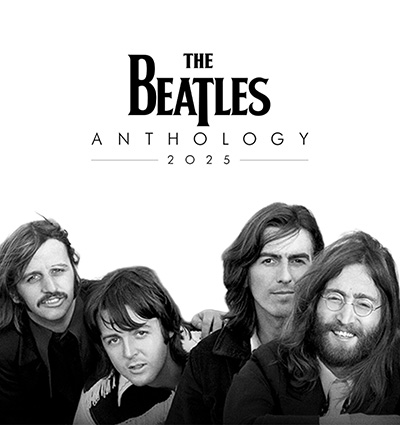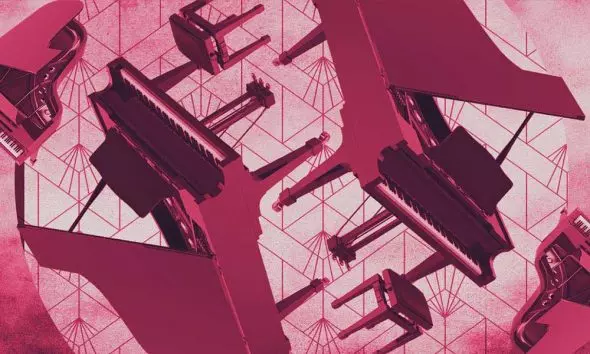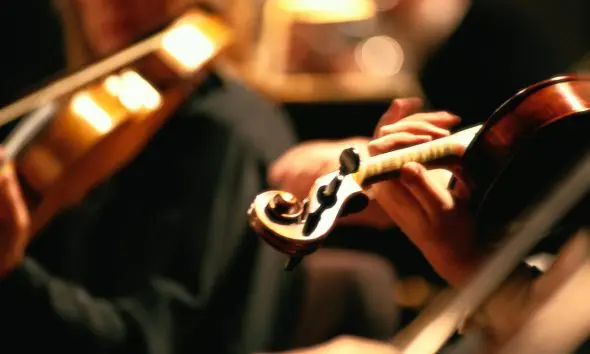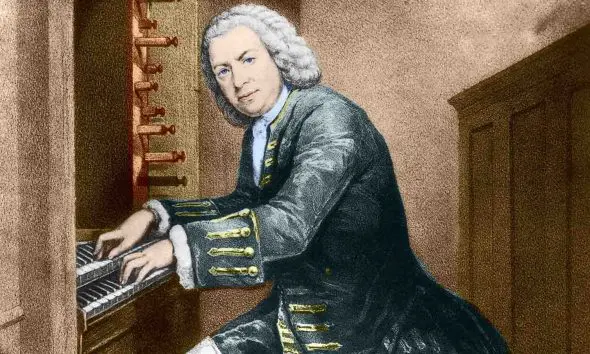reDiscover Beethoven’s Piano Sonatas
Beethoven’s 32 piano sonatas together form one of the most important collections of work in the history of music.
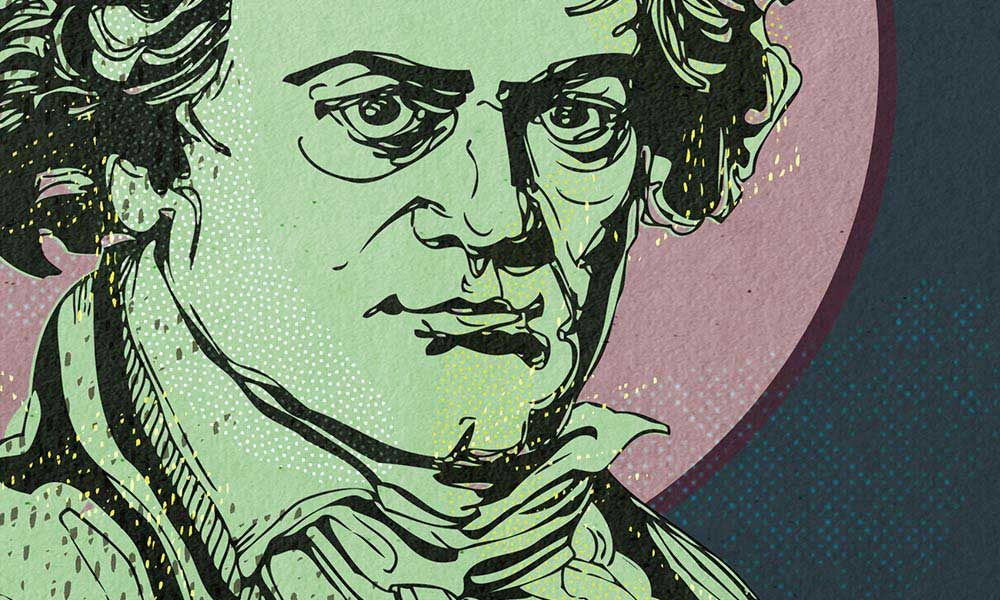
The 32 piano sonatas by Ludwig van Beethoven together form one of the most vital bodies of work in the instrument’s history. They span most of their composer’s life, with each of his compositional phases; and they are closely linked to the development of the piano, reflecting the increasing range and power of the instruments at his disposal. Best of all, Beethoven does not repeat himself; in every sonata, he fuses structure with content and character in a unique way. Scroll down to discover our guide to Beethoven’s complete piano sonatas.
Listen to Beethoven’s piano sonatas on Apple Music and Spotify.
As a pianist, Beethoven began to make his name in Vienna, where his remarkable improvisations quickly built his reputation. He first arrived from his native Bonn aged 16, hoping to study with Mozart, who was happy to accept him as a pupil. It was not to be. At the news that his mother was mortally ill, Beethoven hurried home to be with her. By the time he returned to Vienna, Mozart was dead. Instead, his patron Count Waldstein encouraged him to “receive the spirit of Mozart through the hands of Haydn.”
His relationship with his new professor, Joseph Haydn himself, had its frictions; but when Beethoven later insisted that he learned nothing from Haydn, that was palpably untrue. The early piano sonatas, in particular, are chock-full of Haydnesque qualities: quick changes of mood and tempo, grand gestures and pauses (straight from the ‘Sturm und Drang’ movement in 18th-century music), the ready wit, the variety of structures (sonatas in two, three or four movements) and the building of spans of music from the germs of strong, simple motifs. Beethoven’s spirit nevertheless was utterly different: revolutionary from the start, open to the expression of darker, personal, sometimes ferocious emotions at the dawn of romanticism.
Although Beethoven’s piano sonatas span nearly 30 years, from about 1793 to 1822, they are by no means evenly spread. At least half count as “early” Beethoven, with only a few – though substantial ones – from his middle “heroic” period and a series of “late” sonatas that ended about five years before his death.
Beethoven’s early piano sonatas
Beethoven’s early piano sonatas begin modestly yet energetically with ‘Op.2 No. 1 In F minor’, dedicated to Haydn – though without any elaborate thanks. The scale of Beethoven’s ambitions quickly expanded. For instance, ‘Op. 7’ is an expansive, energetic work in E flat major, positively irrepressible, while ‘Op. 10 No. 3 In D major’ possesses a slow movement marked ‘largo e mesto’, carrying a powerful and profound sorrow that is still astonishing today.
These pieces are technically demanding, requiring clarity, brilliance, lyricism, and energy in equal measures. Pianists of more modest ability can find solace in the ‘Op. 14’ and ‘Op. 49’ Sonatas, and later the G major, ‘Op. 79’: staple pieces in the diet of younger trainees, without any compromise in musical quality.
Beethoven’s ‘Moonlight’ sonata
Beethoven’s experiments with structure led him to entitle each of his two ‘Op. 27′ sonatas’ ‘Quasi Una Fantasia’. The second is now generally known as the ‘Moonlight’ – not his title, but one posthumously appended. The latest scholarly edition by Murray Perahia for Henle quotes documentation that reveals the work’s inspiration to be the fabled Aolian Harp, an instrument played by the wind but thought to carry the songs of those who died young and unfulfilled. It opens with that famous slow movement, then a minuet, and a tumultuous finale. Beethoven requests that the first movement be played without damping the strings at all – perhaps testing the boundaries of the latest model of piano. One way or another, it was not exactly a love gift to its dedicatee, Countess “Giulietta” (really Julie) Guicciardi.
Beethoven’s middle piano sonatas
The ‘Op. 31’ sonatas of 1801-2 have no dedication, which is unusual in Beethoven; but they are thought to have been written for “Giulietta”’s cousin, who was a pupil of his: Countess Josephine von Brunsvik, by then Josephine Deym after her marriage – a prime candidate for the title of Immortal Beloved (the composer wrote her some impassioned love letters after she was widowed). The first sonata in G major is a humorous piece in which Beethoven pokes fun at some pianists’ tendency not to coordinate their two hands. The second, in D minor, experiments with fascinating recitativo and pedal effects, and has been said to be associated with Shakespeare’s The Tempest (if only by Beethoven’s notoriously unreliable early biographer, his one-time amanuensis Anton Schindler). The third, in E flat, is perhaps even more remarkable: intimate, generous, teasing, and filled with exuberance.
Beethoven’s ‘Waldstein’ sonata
By the time Beethoven set about arguably the most heroic of the sonatas, the ‘Waldstein’ Op. 53 (dedicated to his first patron), it was only 1804 – but his artistic vision had expanded incrementally since the Op. 31s. In two movements, the second introduced by an extended slow introduction, the work evokes positive orchestral textures, and the second movement, based on the theme of a Rhenish song, seems filled with pealing bells. The pianist Wilhelm Kempff once said that the start of the second movement seemed to be “standing radiant as a temple in the first light of dawn.” This work and its closest siblings are roughly contemporaneous with the three ‘Razumovsky’ String Quartets Op. 59 and the Fifth and Sixth Symphonies.
Beethoven’s ‘Appassionata’ sonata
The ‘F Minor Sonata Op. 57’, known rather misleadingly as the ‘Appassionata,’ is almost the ‘Waldstein’’s polar opposite: by no means less energetic, but full of furious energy, by turns simmering and explosive – and most unusually for Beethoven, lacking any sense of optimism at its close. Kempff provided a powerful description of its impact when the serene slow movement implodes and leads into an almost apocalyptic finale: “Amid the thunder of sudden sforzati the edifice of the world collapses. Lucifer, once the bearer of light, plunges down from heaven into eternal darkness.” Intriguingly, it is dedicated to Josephine Deym’s brother, Franz von Brunsvik, who was a better cellist than pianist. The pianists of the family were his sisters, Therese and Josephine herself.
Therese is the dedicatee of the ‘F Sharp Major Sonata Op. 78’ – a work of unusual character in two movements, spirited and virtuosic with a remarkable inner radiance. Beethoven once grumbled that he did not understand the popularity of the ‘Sonata Op. 27 No. 2’ (the ‘Moonlight’); he considered this sonata a finer piece.
As for the oddly numbered ‘Op. 81A’, known as ‘Les Adieux,’ this is the only overtly programmatic sonata, each of its three movements bearing a subheading. The first is a farewell; the second a lonely “absence”; the finale a joyous return and reunion. The piece dates from 1809-10, and its official history suggests that the traveling individual was Beethoven’s patron, Archduke Rudolph, who had to leave Vienna with the imperial family before Napoleon invaded.
Beethoven’s late piano sonatas
After that, there was a gap of around four years, to 1814, before the first of Beethoven’s “late” piano sonatas, ‘Op. 90 ‘– in two concise movements, beautifully contrasted. The first is a conflict-ridden conversation, the second is a peaceful and harmonious rondo. And next, two more years before ‘Op. 101’ emerged.
It is worth reflecting on why Beethoven’s output of sonatas had now become so sporadic. The earlier sonatas were often written either for him to perform himself, or for his pupils – and as time went by and his deafness grew more profound, he could no longer give performances or do as much teaching. His later works in the genre were written for important patrons such as Archduke Rudolph, close friends such as the Brentano family, or commissions from publishers. Yet other preoccupations intervened, too: these ranged from compositions in other forms, notably symphonies, string quartets, and the revision of his earlier opera Leonore into Fidelio; the difficulties of life after the latest war against Napoleon, which sparked a collapse in the Austrian currency; and, in 1812, a mysterious love affair. After that, between 1815 and 1821, the composer’s efforts to adopt his nephew, Karl, led to a lawsuit, family tribulations, and extreme stress, which exacerbated Beethoven’s already serious bouts of ill health.
Beethoven’s ‘Hammerklavier’ sonata
In 1817, Beethoven, deep in despondency, wrote very little. He did begin sketches for the ‘Symphony No. 9’, which would be commissioned by the Royal Philharmonic Society in London; and in spring 1818, the piano firm Broadwood, also of London, sent him a new instrument, his biggest and strongest piano yet. It helped to spark him out of the doldrums and into completing the most ambitious of all the sonatas, a gigantic work known as the ‘Hammerklavier’ Sonata. In four expansive movements, it has at its heart an extended adagio that seems to contain all the sorrows of the world. The finale is a mighty fugue of enormous complexity, powered by Beethoven’s indomitable energy – not only undimmed but stronger than ever.
The last three sonatas were conceived as a set
The last three sonatas, Opp. 109, 110, and 111 were conceived as a set from the beginning, written concurrently between 1820 and 1822. They complement one another, sharing many elements. The flow of ‘Op. 109’s’ opening movement is often interrupted by passages that sound questing and improvisatory; next comes an almost demoniac scherzo, and in the finale, a sarabande is the theme for a set of variations – always a favorite form for Beethoven – which seems to nod towards the inspiration of Bach’s ‘Goldberg Variations’. ‘Op.110’ is more personal still: after a tender opening movement and a brief, sardonic scherzo, a despairing adagio finds us in the depths of mourning. But then Beethoven finds solace (as he did in the ‘Hammerklavier’) in a fugue, its soft theme set out in a pattern of rising steps. The adagio interrupts, now with its melodic line shattered into pieces – but the fugue returns too, upside-down, before the music breaks free into a triumphant apotheosis.
Finally, the ‘C minor Sonata Op. 111’ reaches another level of transcendence. It presents two movements of extreme contrasts. The first opens with a ferocious ‘French Overture’-like introduction, ushering in a stormy, violent allegro that eventually burns itself out to a quiet finish. There ensues now another set of variations on a theme that resembles an irregular type of sarabande, in the purest of pure C majors. The first variations build up momentum to a height of elemental energy – after which Beethoven seems to depart into the exploration of ethereal realms that could almost call to mind one of his favorite quotations, Kant’s consideration of Humankind’s place in the universe, the combination of macrocosm and microcosm: “The starry sky above, the moral law within.”
Beethoven lived another five years and did not abandon the piano – the ‘Diabelli Variations’ and the ‘Bagatelles Op. 126’ post-date the last piano sonatas. In this genre, though, perhaps with that last simple C major chord, he decided he had said enough.
Recommended Recording
Wilhelm Kempff’s Complete Beethoven Piano Sonatas features his legendary 1960 stereo recordings, which have been remastered and reissued (8CD + Blu-ray Audio Disc). Gramophone noted, “Wilhelm Kempff is one of the greatest musical persuaders of our time …he consistently gives you the illusion that he and you are discovering the music afresh together.”
Listen to Wilhelm Kempff’s Complete Beethoven Piano Sonatas here.

